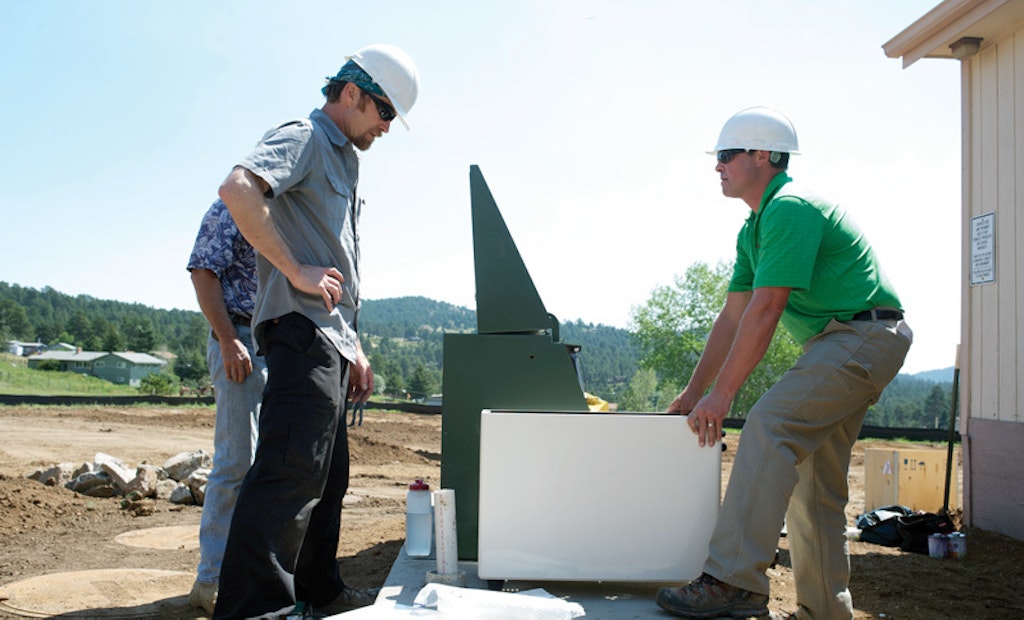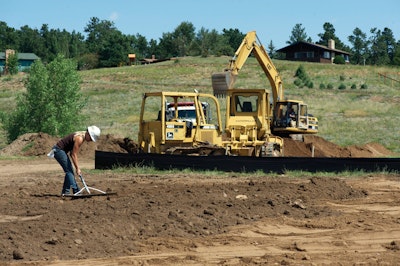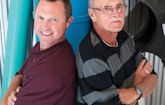
Interested in Pumps?
Get Pumps articles, news and videos right in your inbox! Sign up now.
Pumps + Get AlertsVenturing down holes to evaluate a rock’s ability to support building foundations wasn’t as appealing to geologist Tim Petz as communicating with people in the onsite wastewater world. When given an opportunity to help solve their problems, he chose a hands-on career with immediate gratification over writing construction reports.
In 2004, Petz opened All Service Septic in Arvada, Colo. It specializes in designing residential onsite systems and construction management, but has no employees. “I subcontract all my labor,” says Petz, 43. “When money is available, they get paid. When work slows down, they go skiing.” The policy enabled the company to survive comfortably during the economic slowdown a few years ago.
The Rocky Mountains, diverse geology, severe winters and most of the state’s 5 million people using onsite systems create unique challenges. The Front Range, or Denver Mountains, is a 415-square-mile area of rock, steep slopes and glaciers. The Western Slope, or Aspen area, has alpine meadows, canyons, plateaus and high desert.
Many sites have no soil, and seasonal snow runoff produces massive high water surges lasting a month or two each spring. The majority of systems Petz designs are conventional gravity flow with two 3,000-gallon septic tanks discharging to gravelless chamber trenches. Careful soil science is critical for these systems to work.
The boom years
After Petz earned his geology degree from Ohio State University, he joined Church & Associates, a geotechnical firm in Wheat Ridge, Colo., which determined the qualities of soil before construction began on sites. It was Petz’s job to test soils for onsite systems. “I liked wastewater because it was social,” he says. “Under the tutelage of owner Ed Church, I became the company’s wastewater guru.”
The network Petz built over 10 years put everything he needed to open All Service Septic in his back pocket. His father, Richard Petz, P.E., retired as general manager of a robotics company and joined All Service. “Dad shares his time between Ohio and Colorado,” says Petz. “My contractors and I test soils and design systems, then he reviews and stamps the finished products.”
Petz found his niche and most of his revenue designing onsite systems for “starter castles” during Aspen’s boom years. These typically 15,000-square-foot single-family residences have 11 bedrooms, guesthouses, spas, pools, community rooms and separate gyms. Engineering systems catering to larger infrastructures differed greatly from single-family three-bedroom homes (one bedroom equals 300 gpd).
Early on, Petz used existing soil data to size some onsite systems, then had to repair them. “I learned quickly that I needed to control all preliminary investigations,” he says. “It was a rookie mistake. From then on, I did the soil tests for every system we designed.”
It's a blast
One of Petz’s hardest projects involved a couple wanting to build their multimillion dollar mansion on top of a mountain. At that elevation, there was no soil, only rock. Contractors blasted a gigantic hole, then brought in soil to build a 12,000-square-foot drainfield with effluent distributed in fractured bedrock.
“One out of 10 installations requires blasting, and this is where my geology training comes in big time,” says Petz. “The most critical decision I make, and one that will change a project’s direction, is pulling the trigger and saying, ‘Don’t blow that part of the hill, blow that part over there.’ ”
Petz looks for more fractured, softer rock that is easier to remove. Highly fractured rock also provides treatment as effluent wicks into it. Since centuries of freeze-thaw cycles and cracking have stabilized the rock, it won’t calve. “During the drainfield’s 30 years of life, it is very unlikely for nature to displace the rock,” says Petz.
Working on steep mountainsides is another challenge. It’s too dangerous for contractors to drive machinery on slopes greater than 30 percent, and narrow, winding, steep roads prevent cranes or boom trucks from reaching sites and setting concrete tanks. Plastic tanks on pickup trucks make those systems possible.
Working as a team
Another element making systems possible are onsite designer technicians and sales personnel Annette Gaschler and Carla Ostberg. Gaschler manages the Denver Mountains area and has been with All Service Septic for five years. Ostberg, who manages the Aspen area, ran the Aspen Health Department and reviewed all Petz’s designs before joining the company in 2011. Both subcontractors are NAWT-certified sanitarians. They meet clients and provide Petz with the information he needs to engineer residential systems.
Commercial designs account for 20 percent of the work and encompass schools and summer mountain camps for scouts and other organizations. The camps, at 10,000 feet elevation, require onsite systems that handle high loading, then dormancy for nine months. “I use Bio-Microbics and Orenco pretreatment units,” says Petz. “Just flip a switch to activate them, and flip it again to shut them off.”
Petz subcontracts Erik Hamilton, owner of Peak to Peak in Nederland, Colo., to install secondary treatment systems and service 100 two-year maintenance agreements. (Service contracts are mandatory in 50 percent of the counties.) Gaschler, Ostberg and Hamilton also are responsible for construction management – observing other companies hired to set tanks and build drainfields or reviewing county regulations with them to guarantee work passes inspections.
“I trust my 10 regular installers to do things correctly, but occasionally the team finds someone who is still learning and has made a mistake,” says Petz. “After they educate the individual, we usually don’t have any more problems.”
Petz married Debi, a registered nurse working in a Denver-area cardiac catheterization laboratory, in 2003. She now manages the in-home office, while raising their daughter and son, 5 and 7 years old.
Landscaping challenges
Another design challenge for Petz is a seasonal high water table. Until recently, pretreatment was not an option, so he engineered mound systems. However, mansion owners did not want to see 12,000-square-foot mounds. “In those situations, I worked closely with the landscape engineer to design the system around the landscaping,” says Petz. “The system had to blend with the house scheme or native environment.”
One way to hide drainfields was to plant them with native, low irrigation, low maintenance wildflowers. Another option used artistically placed boulders and piles of soil to add earthy tones. Observation ports were cut to grade and placed in 8-inch-diameter sprinkler boxes with detectable metal tape. Risers were hidden inside oak half-barrel planters growing wildflowers.
All Service also repairs onsite systems installed during Colorado’s population boom in the 1970s. Most one-acre lots have room for replacement drainfields. “Installers prefer gravelless chambers because they’re easier to transport up mountain roads, and they install faster than pressure-dosed drainfields,” says Petz. Of the 80 systems they design annually, 12 have pressurized drainfields, which Petz prefers because they last longer. The company is too small to handle large installations with sewer infrastructure.
All Service Septic’s annual revenue peaked in 2008, just before the economic downturn put an end to construction of huge homes. To compensate, Petz and Hamilton expanded operation and maintenance services, branched into onsite inspections for real estate transfers, accepted low-appeal jobs and worked for less money. As average homeowners began building additions again, Petz and Hamilton returned to upgrading those onsite systems, leaving Ostberg to continue inspections in Aspen where they remained lucrative.
Staying lean and mean
Besides making physical changes to the company, Petz weathered the economic storm by communicating with his stable client base. “Too many companies don’t respond promptly to inquiries, get quotes out on time or follow up,” he says. “Communication is customer service in my world. I always let clients know what I’m doing. Even if I’m behind schedule, they need to know what is happening. Talk to people and they’re going to help by being flexible.”
After the energy exploration boom took off in North Dakota, Petz seized the opportunity to open Innovative Treatment Solutions in Bismarck, N.D., to sell Bio-Microbic products. As a licensed distributor, he meets with engineers designing systems for worker camps, and educates them about FAST treatment units. “When I design systems in Colorado, I give clients a choice of pretreatment options,” he says. “I don’t design anything in North Dakota, thereby avoiding a conflict of interest.”
Petz is content to keep All Service Septic a small, family-owned business specializing in solving the unique wastewater problems of local homeowners. “We’re at an ideal size where I can maintain control of the projects, design quality systems and still go skiing in winter.”









